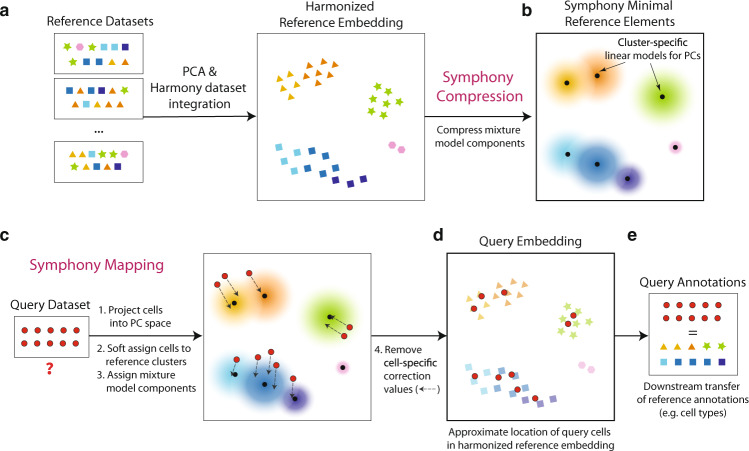Fig. 1. Symphony overview.
Symphony comprises two algorithms: Symphony compression (a, b) and Symphony mapping (c, d). a To construct a reference atlas, cells (colored shapes) from multiple datasets are embedded in a lower-dimensional space (e.g., PCA), in which dataset integration (Harmony) is performed to remove dataset-specific effects. Shape indicates distinct cell types, and color indicates finer-grained cell states. b Symphony compression represents the information captured within the harmonized reference in a concise, portable format based on computing summary statistics for the reference-dependent components of the linear mixture model. Symphony returns the minimal reference elements needed to efficiently map new query cells to the reference. c Given an unseen query dataset (red circles) and compressed reference, Symphony mapping precisely localizes the query cells to their appropriate locations within the integrated reference embedding (d). Reference cell locations do not change during mapping. e The resulting joint embedding can be used for downstream transfer of reference-defined annotations to the query cells.

